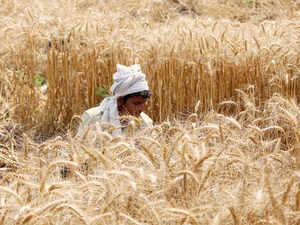
"While such turmoil appears to have immediate causes, their sources are rooted in problems that lie deeper," says Prakash Bakshi, a former chairman of National Bank for Agriculture and Rural Development (Nabard).
Below is a primer on what's wrong with Indian agriculture, how it can balloon into a bigger and nationwide crisis soon, and how things can be fixed:
In farming, small is not beautiful
The root cause of the farm crisis is the size of farms getting smaller as land gets divided into succeeding generations. A critical threat to the production level— and agricultural income—comes from continued fragmentation of agricultural holdings.
Here's how the size shrinks
In 1970-71, there were 70 million holdings or farms operating across 160 million hectares of land. 49 million of these farms were small and marginal farms (SFMF), operating on land up to 2 hectares. By 2010-11, the number of farms had almost doubled to 138 million. The number of SFMF had, however, swelled to 117 million—85% of operating farms. At this rate, we will have 186 million farms by 2040. SFMFs will increase from 117 million in 2011 to 166 million, comprising 89% of total farms.
Why small farms are bad business
1. Small farmers find it difficult to own and maintain bullocks, farm equipment and irrigation system. They depend on larger farms to hire these. But the number of large farms is shrinking. If a small farmer faces a lot of uncertainty regarding these resources, the yield comes down.
2. A small farmer's inputs are also small. This reduces his bargaining power. The suppliers of inputs like electricity, extensions or bank loans also find their supply costs multiplying when they supply to more farmers for the same size of land. This raises various input costs for the small farmer.
3. A small farmer has too small an output to reap the benefit of markets. This forces him to sell his produce on the farm itself at discounted prices.
No way out for small farmer
As farms get smaller, agriculture becomes increasingly less profitable. We are now adding almost 10 million small farmers to the agricultural system every five years. This means a huge agriculture crisis in two decades. Since most states don’t allow leasing of agricultural land, a small farmer has no choice but to remain bound to his low-income farm. He can’t even move in search of an alternative income.
But the government can help make farms 'bigger'
If the government revises its agricultural land lease policy and changes land tenancy laws, a small farmer can lease out his land even for long periods without the fear of losing ownership. Once land leasing is made legal, enterprising farmers would ‘lease in’ to make their ‘operational’ holdings larger. This will bring in economy of scale.
Create alternatives for farmers now
Agriculture cannot—and will never be able to—provide enough employment and sustenance to the increasing rural population. The government must prepare to shift a large chunk of farming population to other occupations. A well thought-out programme providing alternative skills and employment to those who will no longer be active in agriculture, even if temporarily, must be chalked out.
Read More News on
Download The Economic Times News App to get Daily Market Updates & Live Business News.
Subscribe to The Economic Times Prime and read the ET ePaper online.
Read More News on
Download The Economic Times News App to get Daily Market Updates & Live Business News.
Subscribe to The Economic Times Prime and read the ET ePaper online.









 Get Unlimited Access to The Economic Times
Get Unlimited Access to The Economic Times
